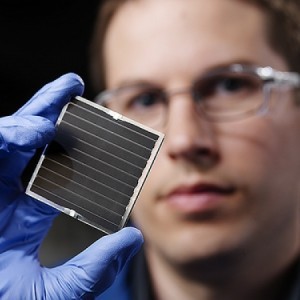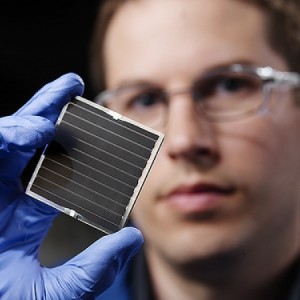The National Renewable Energy Laboratory, within the Department of Energy has announced a presentation of a 45.7% conversion efficiency regarding a four-junction solar cell at 234 times the sun’s concentration. Such an accomplishment demonstrates one of the highest photovoltaic researches of cell efficiencies that JPG has achieved across various types of solar cells.
This new solar cell designed by National Renewable Energy Laboratory (NREL) was created to operate within a concentrator photovoltaic (CPV) system, whereby it can receive more than 1000 suns of concentrated sunlight.
This design has been greatly improved when compared to previous models as it includes an additional high quality absorber layer improving efficiency while also allowing for the device to function at a relatively low cost.
Solar cell design proves to be ultra-efficient and affordable
The multijunction solar cell in question yields sunlight by dividing the entire solar spectrum into variations which are the absorbed by the material, which has a band gap tuned into a specific wavelength range. Ensuring these materials are combined with an optimal band gap is important for better optimal efficiency to be obtained.
The challenge is the maintenance of the high quality materials while integrating them within a very complex solar cell capable of better photo conversion.
The NREL designed and developed this advanced four-junction inverted metamorphic (4J IMM) cell with these issues at the forefront of its research. Thus, the new solar cell design includes a gallium indium phosphide (GalnP) junction, a gallium arsenide junction as well as 2 gallium indium arsenide junctions which are lattice-mismatched to the substrate.
“Lattice-mismatched materials require the introduction of defects, called dislocations, into the device, which can drastically hinder device performance. NREL has learned to control and confine these dislocations to inactive regions of the device, allowing even highly mismatched material to be used in a multijunction cell.” – NREL Scientist, Ryan France, the designer of the solar cell.
National Renewable Energy Laboratory’s cell model at the forefront of solar
The peak efficiency of the cell is 45.7 ± 2.3% was measured under the AM1.5 direct spectrum at 234 suns concentration, even though the cell performs just as well under higher concentration levels (45.2% efficiency at 700 suns concentration).
There are various improvements to the device when compared with previous models, such as a broadband four-layer anti-reflection coating as well as extraordinary performance from the GalnP top cell. When compared to standard GalnP sub cells, this one has a higher voltage as well as a reduced series resistance, allowing it to operate at a better efficiency level and higher solar concentrations.
Its efficiency was validated by the cell measurements lab within NREL, where the measurements at high concentration levels were done by a new flash simulator – a Tunable High Intensity Pulsed Solar Simulator (T-HIPSS). This accurately controls the spectrum of concentrated light, which ensures that every junction of the device will receive the correct amount of light of the spectrum, which reduces the margin of error greatly. As we speak, the cell is being sent for external and independent accreditation by another lab for further testing and confirmation.
Photo by: Pacific Northwest National Laboratory – PNNL on Flickr


